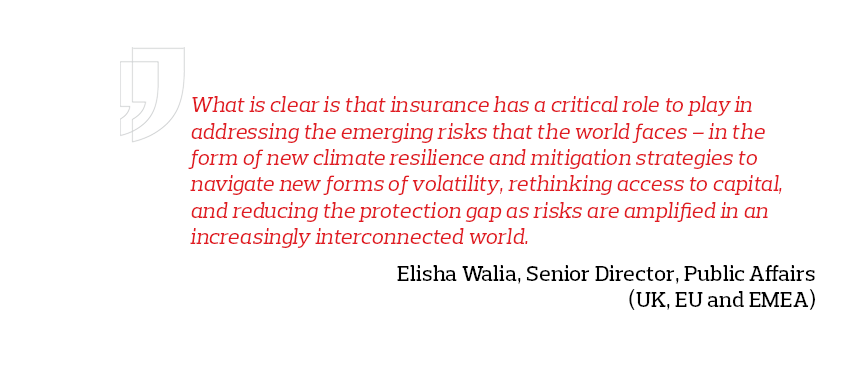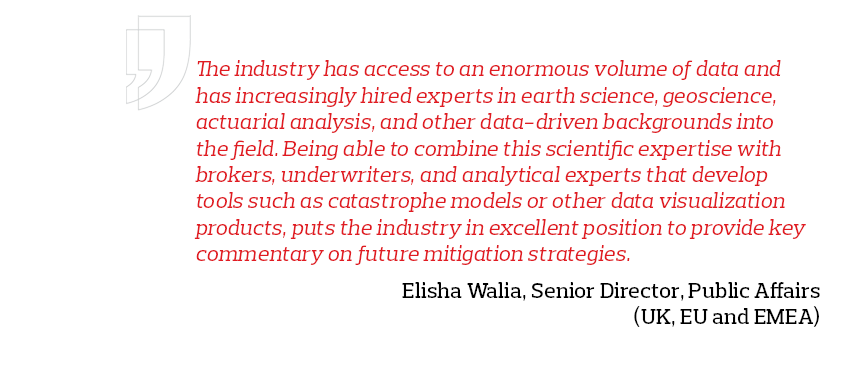Weather, Climate and Catastrophe Insight: 2020 Annual Report New Approaches to Insuring Risk in a Post-Pandemic World
The global community currently faces a series of systemic risks and challenges unprecedented in size and scope. This is particularly evident in the area of weather, climate and catastrophe, with 2020 recorded as the second warmest year for global land and ocean temperatures in the official record since 1880. Such risks increase the cost and burden of responsibility for the communities and governments in which businesses and individuals reside.
The COVID-19 pandemic has underscored the need for co-operative global responses to global problems. Crises such as the pandemic, as well as climate change and cyber issues, are interlinked across borders and geographies. Aon’s 2020 Weather, Climate and Catastrophe annual report found that the global protection gap stands at 64%. That is to say, almost two thirds of the $268bn in economic losses in 2020 were uninsured. Increasing numbers of people are moving into hazard-risk areas, and hence the humanitarian and financial impact from natural disasters is expected to grow. As Mark Carney said, “you can’t wish away systemic risks and it’s much cheaper to deal with them upfront and mitigate them”.

Catastrophe preparedness and response cannot be the responsibility solely of government. The unprecedented levels of pandemic related public spending, estimated by the Institute of International Finance at almost $20 trillion last year alone, will have consequences for government balance sheets for decades to come. Likewise, insurers alone cannot cover total losses for such disaster events. The industry simply does not have the financial resources to accept this scale of risk on its collective balance sheet. To do so would render many policies unaffordable, closing protection off to all but a well-resourced few.
A public-private solution is required. Where loss is so wide-ranging, innovative approaches are required to ensure that coverage is targeted where insurance can most meaningfully address the most important aspects of the risk. It is not possible for government to avoid acting as essentially “the insurer of last resort”, but an innovative partnership with the insurance industry can help to spread the load and define the point at which the public sector needs to step in. Through the use and analysis of data, the (re)insurance sector can develop effective contingency plans for clients, such as flood catastrophe models that apply previously collected data to the modern day via simulation techniques, enabling more detailed insights on loss estimates and enhanced planning.
Industry can still do more. There are currently neither the adequate products, capital or underwriting expertise for some of the most important global challenges described above; climate, pandemic and cyber. This is a gap for which we all have a shared responsibility. Yet the insurance industry is a dynamic and forward looking one that will undoubtedly be able to step up to addressing these societal needs.

Catastrophe modelling fused with climate science would be a sufficient first step. The uncertainty of today’s risks is larger and of a different nature to what the industry is used to. Scientists in (re)insurance need to look beyond their past practices and learn more about climate sensitivity, multi-model ensembles and emissions scenarios. At the same time, more scientists in academia and government need to understand the nature of risk, focusing on extreme event probabilities. Working together, insurance, academia and government can develop realistic climate scenario-based solutions.
Risk will never disappear. We need to collectively work together to implement lessons learned from highly complex, risk prone years such as 2020. The pandemic has demonstrated the strain on public finances that large-scale catastrophes can bring about, and that a public sector-only response is not sustainable in the long term. Governments hope that the financial services industry, with its size and influence, will do more to address these systemic challenges. Our sector can and should do more. Aon is ready to help in these risk-based conversations. Through greater collaboration between the private and public sectors, new innovative solutions can be created, with the commercial sector absorbing some of the risk by attracting new capital and building new markets for these new risks. Through this, we can create more resilient communities and economies.